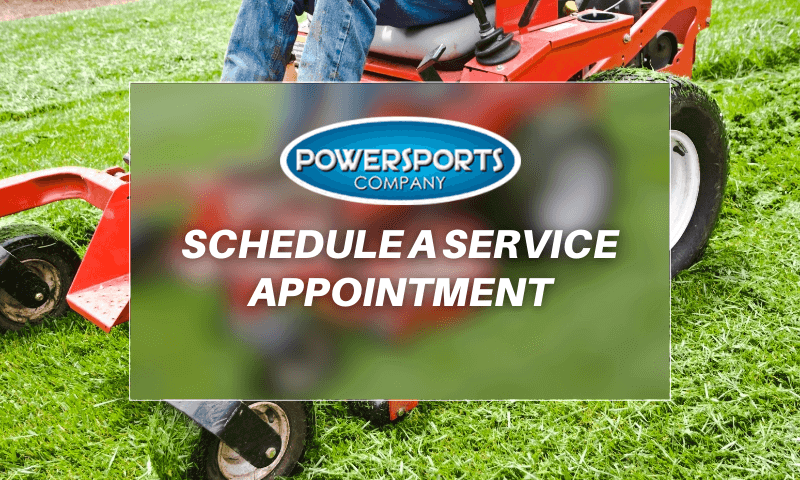
How often should you have your riding mower serviced?
Riding mowers require regular servicing to maintain optimal performance. So, how often should you have your riding mower serviced?
For push mowers, the frequency of service depends on usage. For mowers that are used regularly, they should be serviced every 25-50 hours of use, or at least once a year. If you use your mower less frequently, you may be able to wait longer between services.
Riding mowers require regular maintenance to perform optimally. Manufacturer recommendations vary for how often and when you should get your mower serviced. However, the universal answer is that it depends on how much you use your mower, and in general, it’s a good idea to have your mower serviced at least once a year, ideally before the start of the mowing season.
Here is a list of what a typical service appointment includes for a riding mower:
-
Oil & filter change
-
Spark plug change
-
Blade sharpening
-
Tires pumped
-
Overall inspection
How do you maintain a riding lawn mower?
Proper maintenance is the secret to keeping your riding mower operating at peak performance. Here are some helpful tips for maintaining your riding mower:
-
Check the oil level regularly and change it according to the manufacturers. Recommendations. With Kubota, a riding lawn mower like the ZD1211-3-60 recommends changing your oil after every 100 hours of usage or once a year.
-
Replace dirty air filters.
-
Keep the blades sharp to ensure a clean cut. You can sharpen the blades at least 2-3 times yearly to make a professional-looking cut.
-
Add air to your tires if necessary.
-
Keep the battery charged and clean any corrosion.
-
Check the fuel filter at least once a year.
-
Check for any debris and clean the mower regularly.
While this list can give you a good idea of when to service your lawnmower, it's always suggested to check the manufacturer's handbook, too. Mowers may have a unique maintenance plan based on the brand or the type of mower you are working with, so it's worth taking a look to make sure you're caring for your mower properly.

What are the common problems of lawnmowers?
Even the toughest and most reliable lawnmowers can run into problems that need fixing. But we've got you covered with some helpful tips to troubleshoot common issues and keep your lawn mower running smoothly.
-
Clogged air filters - This can prevent your lawn mower from starting due to restricted airflow. In this case, remove any built-up debris or replace it entirely with a new set.
-
Dirty spark plugs - Tighten up and connect loose spark plugs securely, as they can also prevent your lawn mower from starting.
-
Dull or damaged blades - This is probably the most common problem, as it can affect the appearance of the lawn. If you notice the tips of your grass turning brown or clumps of grass roots getting stuck in your mower, then that is a sign to replace your dull blades with a newly sharpened blade to achieve the look of fresh-cut grass again.
-
Worn-out belts - Signs for a worn-out belt include small cracks, tears, and if the side of the wall looks burned. Belts deteriorate over time, so replace the belt to avoid splitting or breaking.
-
Dead battery - No one likes a lawn mower that won't start. A lawn mower battery can last season after season as long as you perform regular maintenance. This includes removing corrosion buildup using a wire brush with a baking soda and water solution. After that, apply an anti-corrosion spray to prevent future buildup. For the winter months, a battery charger can come in handy.
-
Damaged fuel filter - Another reason you could run into your lawn mower not starting is if it has a clogged or damaged fuel filter. Check for any debris on the filter and, when necessary, book a service appointment or refer to your user manual for information on how to replace it..
There are some repairs that you can do yourself, such as a filter or oil change; however, there are other repairs that a professional should only do. Taking your lawn mower to a trained technician can also help catch minor issues before they become more significant and more costly.
How do you change a tire on a riding lawnmower?
Taking care of your riding lawnmower is important to keep it running smoothly, and changing its tires is a key part of maintenance. When your tires start to show signs of dry rot from heat and UV exposure, or if you find yourself frequently inflating your tires, it might be time to upgrade to new tires with a better grip.
Here are the basics on changing a front and rear tire on a riding lawnmower. Generally, it's best to refer to the owner's manual as it will go in-depth on what manufacturer parts and tools are needed. To avoid any mishaps, taking your riding lawnmower to a professional can get the job done for you, as they know the ins and outs of lawnmower maintenance and can also make recommendations if necessary.
Changing the tires on a riding lawnmower:
-
Disconnect the spark plug
-
Position the jack and jack up the riding mower
-
Remove the wheel and tire
-
Install new tire on the rim
-
Seal the bead to the rim
-
Reinstall the wheel
-
Lower the riding mower and reconnect the spark plug.
What's the best way to clean the bottom of a riding lawn mower?
A clean lawn mower makes everything better. When cleaning a riding lawn mower, there are several ways to clean it, depending on what type of riding mower you have. Some mowers include a hosepipe attachment where you turn the tap, and the water cleans it for you, or you can clean it manually with a scraper. But whichever method you choose, it's always best to schedule some time to clean the bottom of your lawn mower so it stays in good shape.
How often do you do an oil change on a lawn mower?
Changing the oil in your mower every 50 hours or at least once a year in the spring or summer is recommended. Regular oil changes help keep the engine running smoothly and extend the lifespan of your mower. Typically, you would drain the oil, replace your current filter with a new oil filter, and pour the engine oil in the hole where the new oil fill plug or dipstick rod goes. To ensure the oil level is correct, dip the clean dipstick rod and pull it back out to check the oil levels.
What happens if you don't change the oil in a lawn mower?
Not changing the oil in your mower can cause damage to the engine due to increased friction and heat. Over time, this can cause the engine to fail, resulting in costly repairs or replacements. If you don't have time to change the oil or perform other maintenance on your lawn mower, you can take it to a professional who will handle the maintenance for you. They can also recommend the type of oil to use for your lawn mower since the oil type depends on what type of engine the mower has.
Spring into Action: Schedule Your Lawn Mower Service with Powersports Company Today!
Lawn mower maintenance is just like car maintenance. How often you should service your lawn mower depends on the lawn mower type and what the owner's manual recommends. But maintaining your lawn mower includes a typical oil & filter change, spark plug change, blade sharpening, tire replacement, and more. At Powersports Company, we offer various services for all types of lawnmowers, including riding mowers. Our experienced technicians can perform everything from routine maintenance to major repairs, and we use only high-quality parts and products to ensure your mower runs at peak performance.
So, whether you need a new battery for your riding mower, a tune-up for your push mower, or a repair for your zero-turn mower, we've got you covered. Don't wait until it's too late – schedule a service appointment today and keep your mower running at peak performance this spring and summer season.
